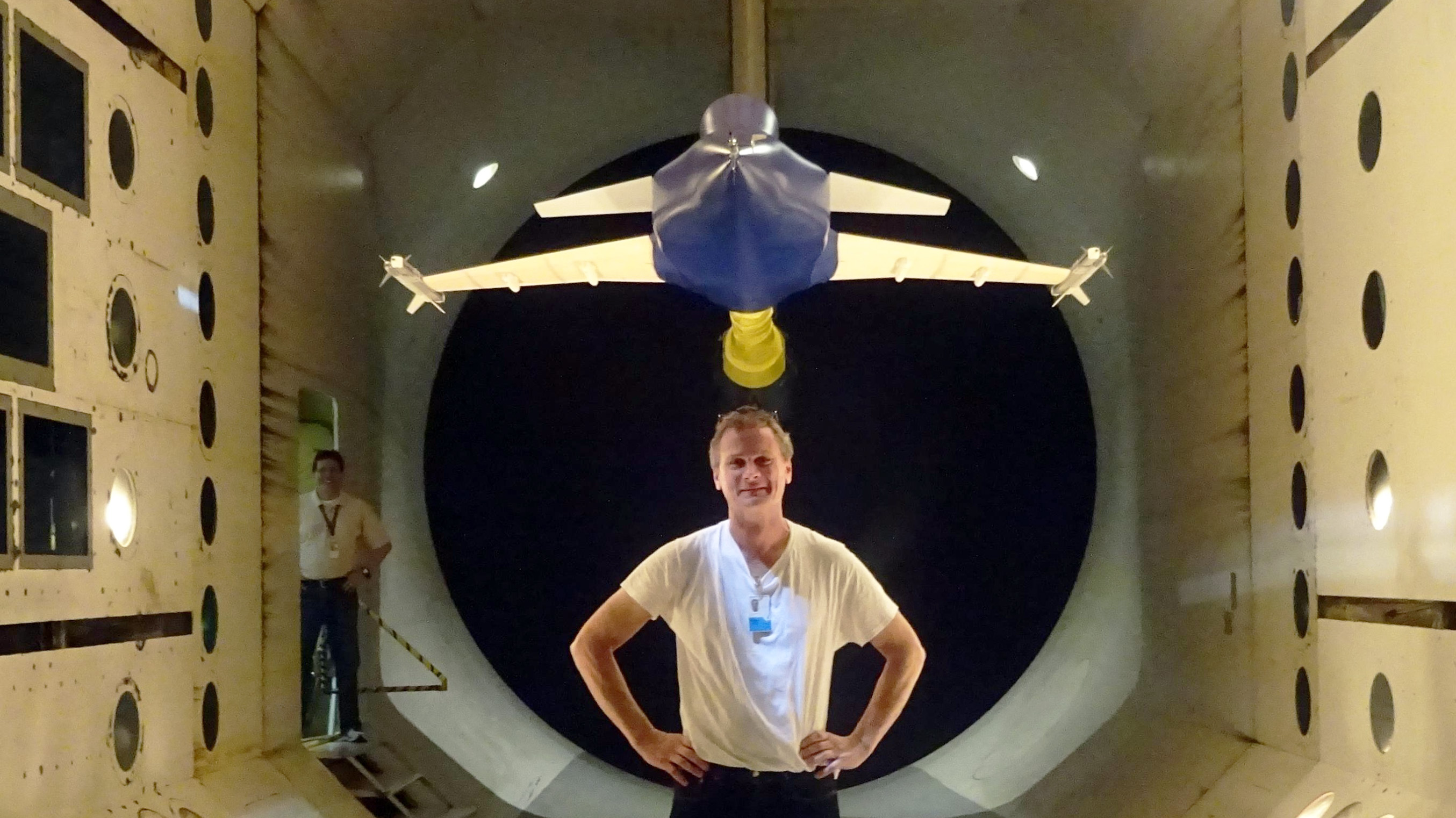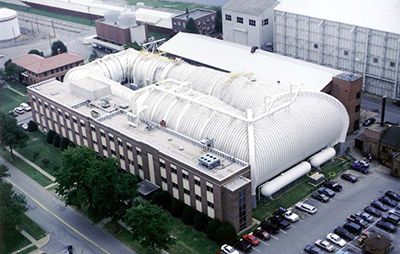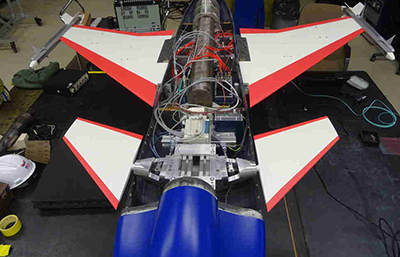Challenging the speed of sound in NASA's wind tunnel

A collaboration between KTH and NASA is taking aeronautical research to new heights. The project is an important contribution to aviation safety and underlines the importance of international partnerships in research.
Professor Ulf Ringertz from the School of Engineering Sciences is leading the project. Together with his research team, Ringertz aims to improve flight safety by studying the interaction between aerodynamic forces and the structural flexibility of aircraft.
"This research is particularly important when aircraft exceed the speed of sound. Under these conditions, aeroelastic instabilities can lead to structural damage in an aircraft. By understanding and controlling these phenomena, it will ultimately be possible to improve flight safety," says Ringertz, who recently visited the US to conduct tests in NASA's wind tunnel.
A unique test facility

At the heart of the project is NASA's Transonic Dynamics Tunnel (TDT), a unique wind tunnel that can be filled with air or heavy gases to generate speeds above the speed of sound.
"It is an extraordinary opportunity to have access to a facility that is unique in the world. The TDT tunnel is also currently testing rockets for NASA's upcoming Mars mission and a helicopter that will fly on Titan, one of Saturn's moons," Ringertz says.
The main benefit of the tests at NASA is to gather data to understand better how aircraft behave near the speed of sound, where both civil and military aircraft often operate.
"The research is of high societal importance. It contributes to improved safety and air capacity of advanced aircraft such as the Gripen JAS 39 and plays an important role in educating future aeronautical engineers at KTH," says Ringertz.
"We also have a number of common technical challenges related to the aircraft's rudder and external load system. These form a solid basis for further cooperation."
Swedish innovation, American resources

The collaboration, which started in 2015 and runs until at least 2025, combines Swedish scientific expertise with US resources. This opens up to new innovations.
"The initiative originally came from KTH, and together we have established a collaboration that not only benefits the organisations involved but also Sweden and the US. We share risks and costs, as well as all data and research results," says Ringertz.
To make the tests as realistic as possible, Ringertz and his team have built a scale model of a fighter aircraft made of carbon fibre composites. This is the same material used in modern commercial aircraft such as the Boeing 787 and Airbus 350. It allows for reduced weight without sacrificing strength.
The researchers have also developed on-board instrumentation systems, including sensors to accurately measure deformation, air pressure and acceleration.
Text: Marta Marko-Tisch ( martamt@kth.se )

